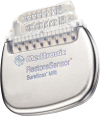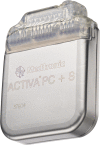Closed-loop neurostimulation: the clinical experience
- PMID: 24850309
- PMCID: PMC4121459
- DOI: 10.1007/s13311-014-0280-3
Closed-loop neurostimulation: the clinical experience
Abstract
Neurostimulation is now an established therapy for the treatment of movement disorders, pain, and epilepsy. While most neurostimulation systems available today provide stimulation in an open-loop manner (i.e., therapy is delivered according to preprogrammed settings and is unaffected by changes in the patient's clinical symptoms or in the underlying disease), closed-loop neurostimulation systems, which modulate or adapt therapy in response to physiological changes, may provide more effective and efficient therapy. At present, few such systems exist owing to the complexities of designing and implementing implantable closed-loop systems. This review focuses on the clinical experience of four implantable closed-loop neurostimulation systems: positional-adaptive spinal cord stimulation for treatment of pain, responsive cortical stimulation for treatment of epilepsy, closed-loop vagus nerve stimulation for treatment of epilepsy, and concurrent sensing and stimulation for treatment of Parkinson disease. The history that led to the development of the closed-loop systems, the sensing, detection, and stimulation technology that closes the loop, and the clinical experiences are presented.
Figures



References
-
- FDA. Medtronic Activa tremor control system P960009. Available at: http://www.accessdata.fda.gov/cdrh_docs/pdf/p960009.pdf. Accessed Feb 19, 2014.
Publication types
MeSH terms
LinkOut - more resources
Full Text Sources
Other Literature Sources
Medical

